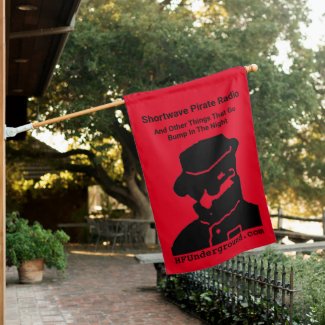Highlight of this report: land beacons mixed with fishing buoy beacons on 2 MHz.Here on the California coast, there are a lot of Pacific fishing vessels within range, and their
drift net buoy beacons can be heard. It is often difficult to tell at first if a mystery signal is out in the ocean or on land. This makes HF and MF beacon hunting even more fascinating in some areas of the spectrum. There are some types of beacons which are easy to spot by their characteristics. There are older dasher fishing buoy beacons and then there are CW Morse ID fishing buoy beacons, both of which require vessels to Direction Find (DF) them, and they both seem to be a lot more rare lately. That is probably because the more modern
GPS fishing buoy beacons now use either digital HF/MF modem bursts or Selcall response, or else they use
all-satellite fishing buoys (such as L-band
IsatData 1525.0 to 1559.0 MHz/1626.5 to 1660.5 MHz), which provide the vessels with exact coordinates and tracking (without the need for DF). This 2 MHz report includes some of the older CW buoy beacons, mixed with at least one land beacon, and one unknown whether it is land or sea.
If you found this detailed report useful or interesting, please take a moment to reply with a comment on it.
Report
2019JAN02 0620UTC
2006.00 kHz CW, "LC6", Morse, fishing buoy beacon, 3 minute OFF cycle, fading, readable, -120 to -130 dBm.
Note on LC6 timing cycle: 3 Morse IDs repeated with a long DF dash, then beacon is OFF for approximately 3 minutes.
2008.40 kHz CW, UNID, ditter, beacon, land, good readable, -110 dBm.
2065.01 kHz CW, "SY6", Morse, fishing buoy beacon, readable, fading, -118 dBm.
Note on SY6 timing cycle: 3 Morse IDs repeated with a 1.5 second long DF dash, then beacon is OFF for approximately 4 minutes 50 seconds.
2097.28 kHz CW, "A", Morse, beacon, land, good readable, -100 dBm.
PLAY AUDIO recording of 2065 kHz CW SY6 Morse fishing buoy beacon 2019JAN02 0620UTCSpectrum waterfall image below shows 2065 kHz CW SY6 Morse fishing buoy beacon 2019JAN02 0620UTC:

The ionogram below shows the Pt. Arguello Digisonde data at the time of this log report, with foF2=2.175MHz, fxI=2.90MHz.




